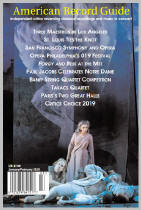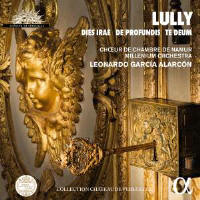Texte paru dans: / Appeared in: |
|
|
Outil de traduction ~ (Très approximatif) |
|
|
Reviewer: William
J. Gatens This is a concert performance from February 2018 in the Chapel Royal at Versailles. The pieces are grands motets, the most ambitious genre of sacred music in 17th-Century France, involving an ensemble of soloists, a choir of five parts, and orchestra. In his notes to this recording, Thomas Leconte points out that Lully never had an official appointment in Louis XIV’s Chapel Royal, but as the head of the court’s instrumental music the king often called on him to furnish church music in the grand manner. There are 11 surviving grands motets by Lully. Six were published in 1684. The three recorded here are associated with specific occasions. Dies Irae and De Profundis were for the funeral of Queen Marie-Therese in September of 1683. The Te Deum was for the baptism of Lully’s son at Fontainebleau Palace in September of 1677. The boy’s godparents were none other than the king and queen. Certainly the grandiose character of the music, with trumpets and timpani in addition to the customary strings and winds, was intended to extol the king and queen rather than the infant ostensibly at the center of the ceremony. The Te Deum was repeated two years later for the wedding of Marie-Louise of Orleans with Charles II of Spain. A third performance in January 1687 to celebrate the king’s convalescence from surgery proved to be fatal to the composer. He struck his foot with a heavy staff that he used to beat time, the wound became infected, gangrene set in, and the composer died in March.
The technical standard of these performances is exceptionally high, but one may question some of the artistic decisions. Many of the fully scored passages sound raucous. Solo singers are apt to be histrionic. In some of the quieter sections, the continuo realization is too busy, with a constant plonking of theorbos like a rain shower, and is more distract-ing than supportive. The most serious fault is the recorded sound. It is too loud, too close, and too brash. Much of the time one can hear what I take to be the vigorous sniffing of the conductor to emphasize the rhythmic character of the music. I submit that if that is audible, the recording is too close. As we expect from a concert recording, there are extraneous noises here and there. Some listeners may find this in-your-face intensity attractive. I prefer the series of recordings by Hervé Niquet and Le Concert Spirituel from FNAC in the mid 1990s, reissued by Naxos in 2000. There the tone is more refined but by no means bland. The performance is more theatrical than churchly, but not as histrionic as here. | |
|
|
|
|
Cliquez l'un ou l'autre
bouton pour découvrir bien d'autres critiques de CD |
|




